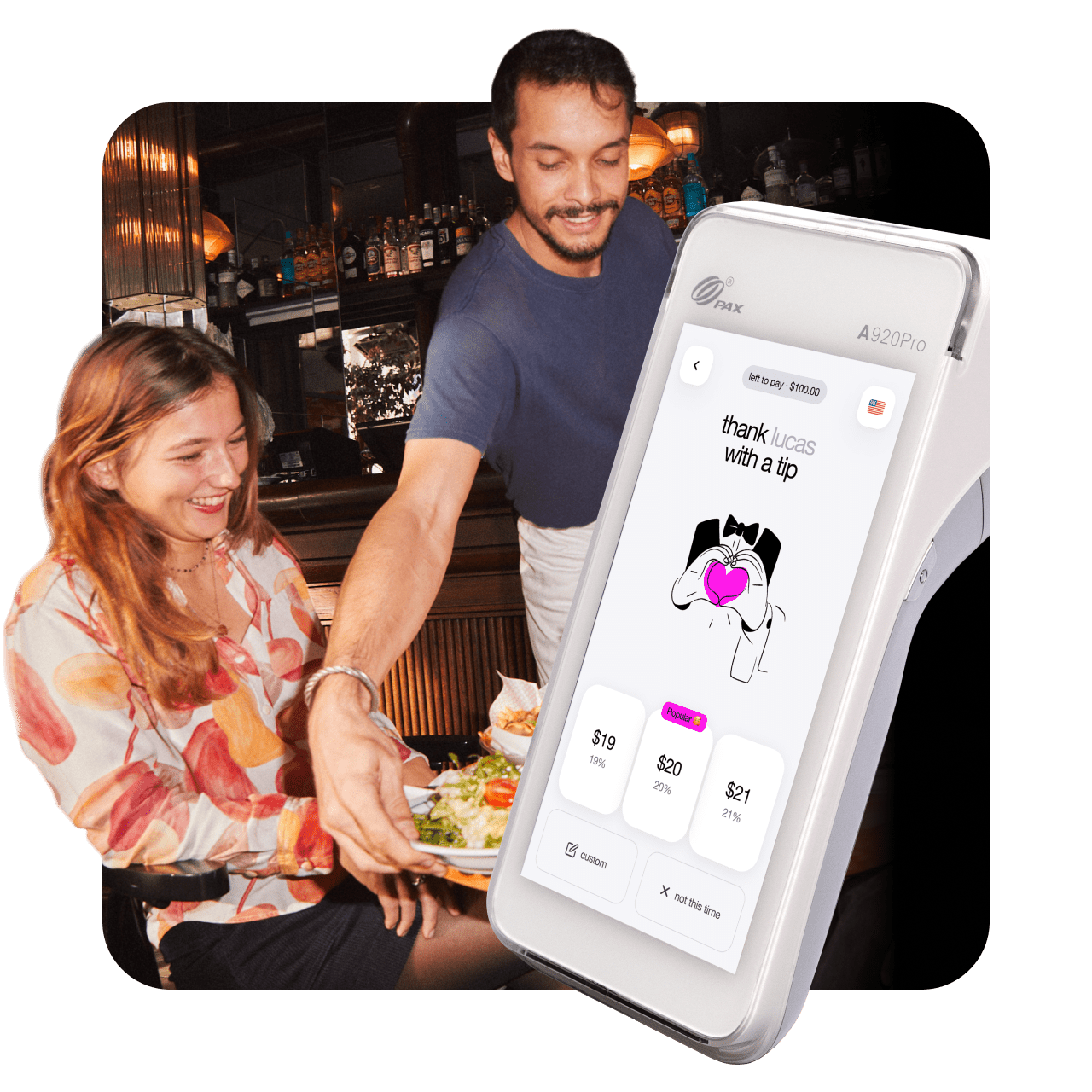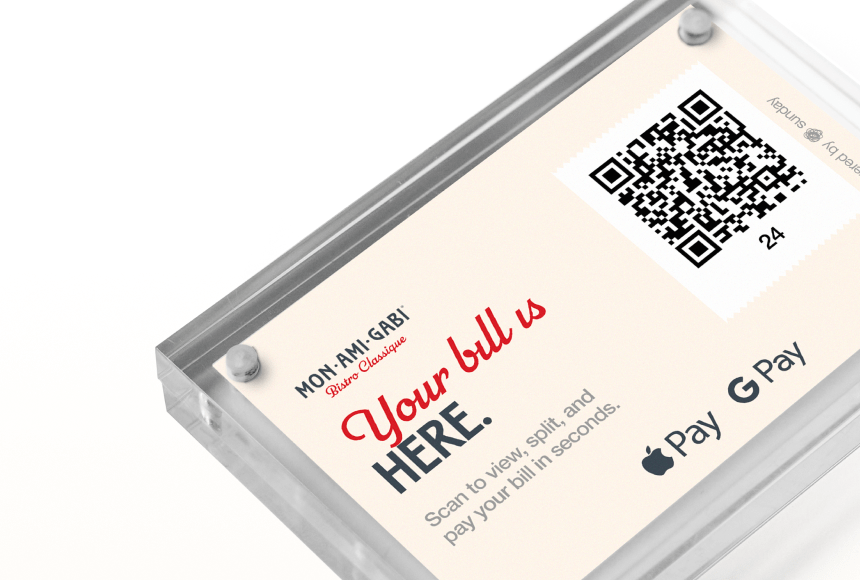
Finding the Perfect Card Reader for Your Unique Dining Experience
Moving Beyond Basic Payment Devices
A few years ago, a smart terminal might have been viewed as a simple card reader. Today, they have evolved into full-fledged solutions that can streamline your entire restaurant—from order-taking and payment processing to loyalty integration and real-time analytics. With so many options on the market, how do you pick the one that truly aligns with your business?
This guide aims to help you zero in on the key considerations—whether you run a casual café, upscale bistro, food truck, or multi-location franchise. By the end, you’ll have a clearer idea of which features to prioritize and why a well-chosen smart terminal can be one of the best investments you make for your restaurant.
Clarify Your Restaurant’s Workflow
Before diving into specific brands or features, take a close look at your service flow. Do you operate with a classic table-service model, or is your concept more counter-based and fast-paced? Are servers frequently running tabs at the bar, or do they finalize transactions at each table in real time?
These questions matter because the right device must fit how your staff actually works. For instance, a sleek handheld might be ideal for a bustling restaurant where servers finalize checks at the table. Meanwhile, a single, static terminal might be sufficient for a small bakery with limited staff. Understanding your workflow is the foundation for all other decisions.
Consider Payment Options and Flexibility
Your diners likely bring an array of payment preferences—chip cards, tap-to-pay using phones or watches, even QR code scanning. A smart terminal that accommodates all of these ensures nobody is turned away or left fumbling with a method you don’t support.
Check if the device:
- Processes chip and magnetic stripe cards
- Accepts contactless (NFC) payments (Apple Pay, Google Pay, etc.)
- Offers or integrates with QR-based solutions for phone-based payments
A broad range of acceptance reduces friction at checkout, pleasing customers who see your restaurant as up-to-date and user-friendly (Forbes).
Look for User-Friendliness and Staff Adoption
An advanced smart handheld is only as effective as your team’s willingness to embrace it. Features might look fantastic on paper, but do they truly help (rather than complicate) your servers’ daily tasks?
Key indicators of user-friendliness include:
- Intuitive touchscreen navigation that resembles familiar smartphone gestures
- Minimal keystrokes needed to process payments or apply discounts
- Quick how-to resources and customer support in case staff need assistance
When employees feel comfortable with the technology, they can deliver better service—ultimately enhancing your guests’ experience (Hospitality Tech).
Assess Integration with Your POS and Other Systems
Ideally, your smart terminal shouldn’t exist in a silo. To streamline operations and avoid double entry, your card reader should communicate seamlessly with your point-of-sale system, inventory management software, or even loyalty programs.
Ask vendors about:
- Real-time data syncing with your POS (like automatic subtraction of items from inventory when an order is placed)
- Loyalty or rewards platforms that can be triggered at checkout
- Inventory alerts or menu updates that push to the device in real time
This level of integration saves staff from bouncing between multiple devices or re-keying sales figures after closing. As your business scales—adding online orders, new locations, or pop-up events—such synchronization becomes even more vital.
Prioritize Security Features
Payment security is non-negotiable. Guests need to trust that your restaurant protects their card data. Look for devices offering:
- EMV Chip Support: The gold standard for preventing counterfeit fraud
- End-to-End Encryption: Ensures card details are unreadable if intercepted
- Advanced Access Control: Biometric or PIN-based staff logins to prevent unauthorized voids or refunds
Additionally, confirm the device adheres to PCI DSS (Payment Card Industry Data Security Standard) compliance. Displaying or mentioning these certifications can reassure diners they’re in safe hands.
Evaluate Tipping and Customer Experience
Tipping can be a delicate matter—people want to do it easily, without feeling pressured. A good smart terminal fosters a positive dynamic by:
- Suggesting Tip Amounts: Discrete prompts like “15%, 18%, 20%, or Custom” nudge diners toward fair gratuities
- Transparent and Quick Options: Minimizing the steps needed to confirm a tip so nobody’s stuck at the terminal for too long
- Post-Tip Confirmation: Letting staff see real-time tip details, which can reduce miscommunication or mistakes
When this step is smooth, it benefits both diners—who appreciate clarity—and staff—who see consistent, sometimes higher, gratuities.
Future-Proofing and Scalability
Restaurants evolve. You might expand your menu, open a new branch, or introduce loyalty partnerships. A smart terminal should adapt to these changes, rather than forcing a total technology overhaul. Consider:
- Device Upgrades or Software Updates: Are new features rolled out regularly, and can your hardware handle them?
- Modular Add-Ons: If you decide to adopt QR code payments next year, can the device integrate them seamlessly?
- Cross-Location Management: For multi-unit operators, does the solution manage consolidated reporting across branches?
Choosing a flexible, forward-looking solution helps avoid buyer’s remorse when new opportunities or restaurant trends emerge.
Set a Realistic Budget—But Factor in ROI
Costs can vary widely, from straightforward pay-per-device models to monthly or transaction-based fees. While it’s tempting to choose the cheapest option, consider the overall return on investment (ROI):
- Time saved for staff means more tables served, less labor in reconciling end-of-day totals.
- Enhanced guest experiences can lead to higher tips, bigger average checks, and improved loyalty.
- Reduced errors and chargebacks save money down the line, offsetting any higher initial cost.
Often, a slightly pricier device with robust features pays off quickly in boosted efficiency and satisfied diners.
Look at After-Sales Support and Reliability
No device is invincible. If something glitches at 7 pm on a Saturday, you need quick fixes. Before purchasing, investigate:
- Customer Support Hours: Is help available during your peak times, nights, or weekends?
- Hardware Warranty: Does the vendor offer a straightforward repair or replacement policy?
- Software Updates: Frequent, automatic updates can keep your system secure and relevant, but they must be well-tested to avoid disruptive bugs.
A dependable partner can ease your mind, knowing you won’t be left in the lurch during your busiest rushes.
Consider Solutions Like sunday for a Holistic Approach
An option worth exploring is sunday, which offers a simplified interface for payments, integrated tipping, and easy loyalty sign-ups. By combining advanced features with user-friendly design, solutions like sunday can address many of the points discussed here, helping you:
- Speed up table turn times
- Offer multiple payment methods (NFC, chip, swipe, QR)
- Provide real-time data for better operational decisions
- Lower staff stress, thereby improving the guest experience
Ultimately, the right smart terminal or card reader should align with your specific environment. For instance, a bustling all-day café with a dedicated bar may appreciate robust reporting and quick-scan loyalty. An upscale dinner venue might prioritize elegant, minimal hardware that fits the ambiance. In any case, platforms that emphasize simplicity and integration can be strong contenders.
Conclusion: Making an Informed Choice
Choosing the best smart terminal—whether you call it a card reader, smart handheld, or smart terminal—isn’t just about ticking boxes for contactless payments or chip reading. It’s about weaving speed, security, and flexibility into your restaurant’s everyday rhythm. By understanding your workflow, confirming compatibility with existing systems, and focusing on user-friendly design, you’ll land on a device that streamlines tasks for staff and delivers a memorable final impression for guests.
And in a world where a single frustrating detail can overshadow a great meal, ensuring the payment process is quick and trouble-free might be the advantage your restaurant needs to stand out. A well-chosen smart terminal can boost everything from staff morale to the average check size—while giving customers the modern, hassle-free experience they crave.
Find out more today
Drop us your details below and we’ll reach out within the next 24h
The payment terminal to make your operation simpler.
Connected to your POS, we offer the only payment terminal specifically designed for restaurants.




